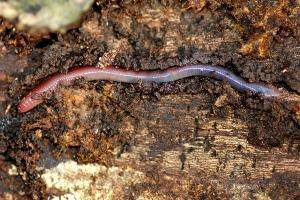Non-native earthworms play an underappreciated role as seed predators
In a study conducted at the University of Toronto’s Koffler Scientific Reserve at Jokers Hill (KSR) Professor Kotanen and graduate student Colin Cassin found significant seed losses caused by invasive earthworms. Their study was recently published in Biological Invasions and covered in UTM News
, New Scientist and watch for an upcoming interview with Bob McDonald on Quirks & Quarks.


- Cassin, Colin M., and Peter M. Kotanen. “Invasive earthworms as seed predators of temperate forest plants.”
- In UTM News
How earthworms harm ecosystems: UTM study
by Blake Eligh - New Scientist (p. 14, 16 April 2016; on-line)
- Interviewed on Quirks & Quarks, May 14/2016 on-line
Abstract
Soil seedbanks play a key role in forest plant communities, contributing to regeneration and acting as a refuge from seed predators. This study provides evidence that seeds entering the soil seedbank are vulnerable to granivory by invasive earthworms in temperate forests. Overall, 73 % of seeds of 6 ecologically important forest species were removed from the soil surface over 2 weeks in a Lumbricus terrestris microcosm experiment; 30 % vanished entirely, and presumably were destroyed. The invasive garlic mustard, Alliaria petiolata, was subject to the highest rates of removal. In contrast, results from a field exclosure experiment using 23 species of seed indicate that while seed predation by worms is still detectable, predation by rodents often may mask impacts of earthworms under natural conditions. Worms and rodents preferred different sizes of seeds: while seed predation by rodents was high in mid- to large-seeded species, earthworms tended to prefer smaller seeds. These findings suggest that although rodents are the main driver of seed predation, invasive earthworms may act as an additional ecological filter, and potentially may further influence the species composition of forest plant communities.
